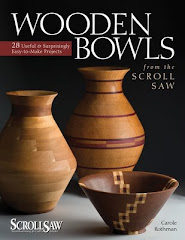A while ago, I posted a photo showing severe areas of wear on the graphite pad of my Jet belt/disc sander. Until then, I was not even aware that there was such a pad, or that the deep indentations were the cause of my inability to sand vertical sides.
I had called Jet to help me troubleshoot the problem, found out about and ordered the pad, and installed it with a great deal of difficulty. The old adhesive was almost impossible to remove, even with Goo Gone, and the new pad had the same type of adhesive on it.
Recently, the same problem sanding problem reappeared, not as bad as the first time, but still problematic. However, in the interim, I had discovered that Klingspor's Woodworking carried short rolls of cloth backed graphite in 6" widths, and ordered a piece large enough for two complete applications to keep on hand. Not surprisingly, it was far less costly than ordering the single piece from Jet.
However, the real bonus was the discovery that it was applied using spray adhesive. I removed the old pad, with the same amount of difficulty as the first time, cleaned the bed thoroughly, and applied the new pad, cut to appropriate length, using repositionable adhesive. The instructions specified spray adhesive, and this was what I had on hand. It's been completely trouble free, and I'm now considering replacing just the lower part when needed, rather than the entire pad, since removal should not be such a production.
Nice to find a really good solution to a recurring problem. I do like the fact that there is an interface between the sanding belt and the metal bed, which not only keeps things cooler, but protects the bed from "dings".

































